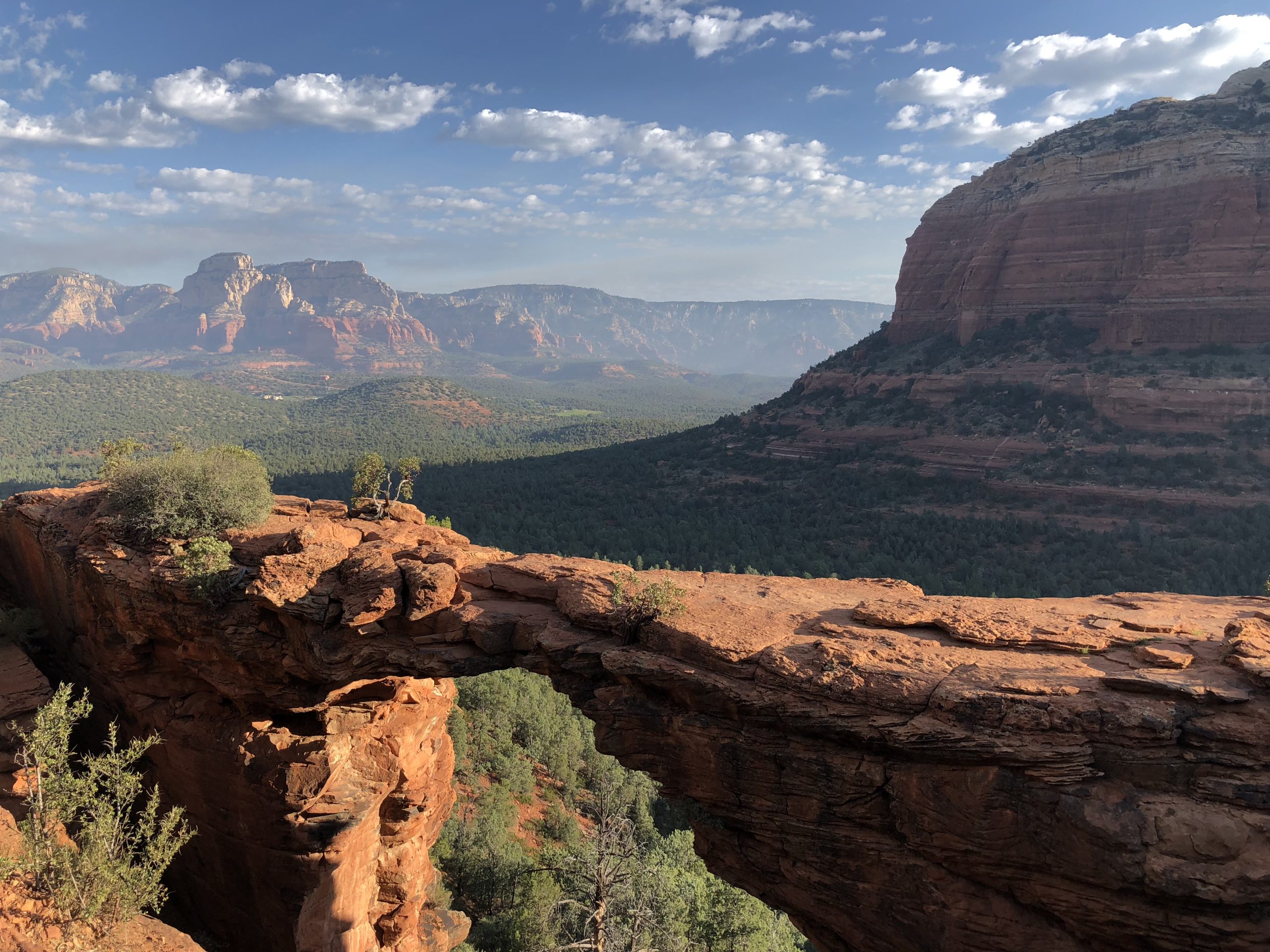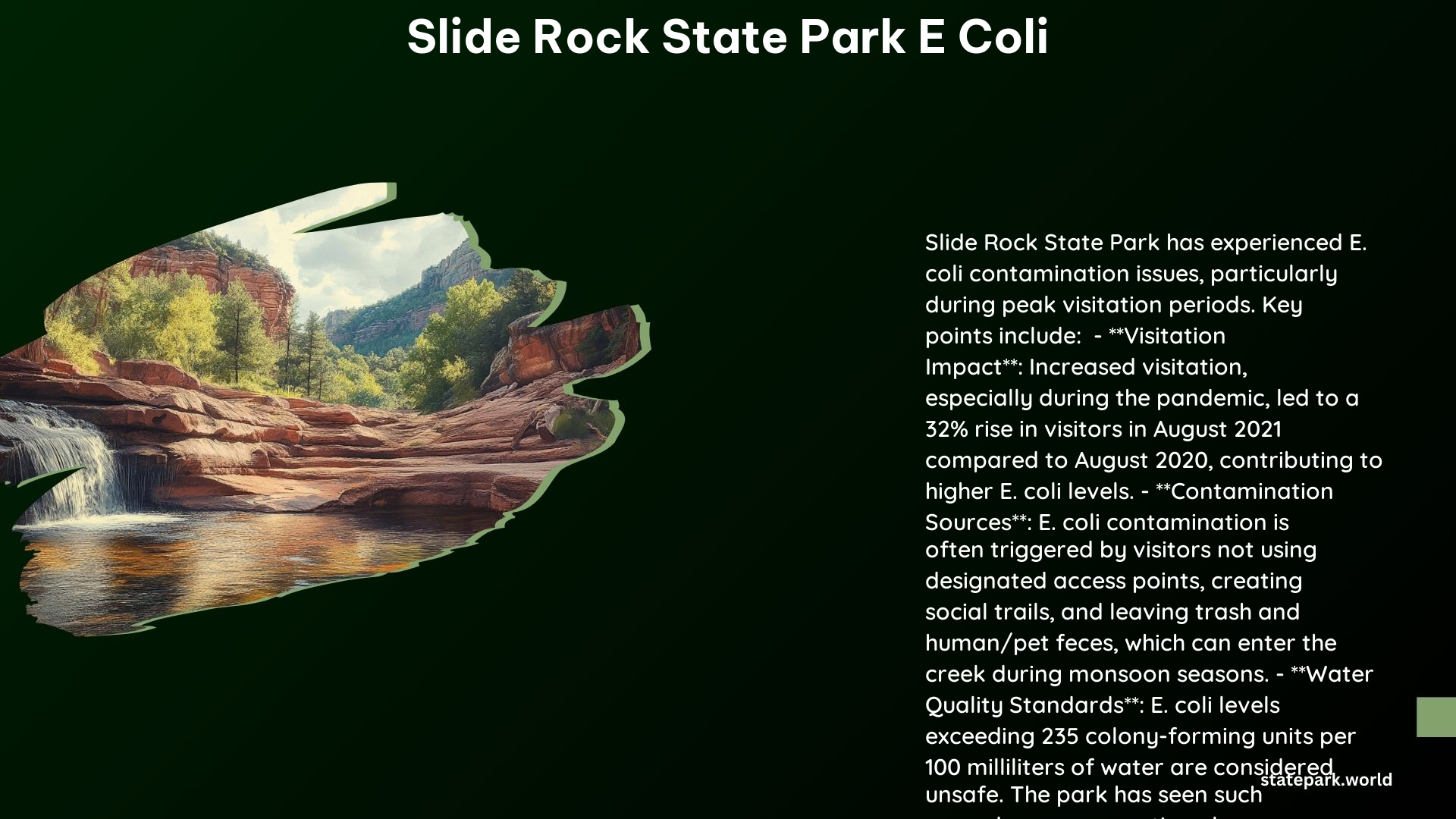The Slide Rock State Park in Arizona has been facing significant water quality issues due to high levels of E. coli bacteria in Oak Creek. This has led to multiple swimming bans and concerns for the safety of visitors. In this blog post, we’ll dive into the current E. coli levels, the reasons behind the swimming bans, and the ongoing efforts to improve the water quality at Slide Rock State Park.
What is the current E. coli level in the water at Slide Rock State Park?

The exact current E. coli levels in the water at Slide Rock State Park are not specified in the latest available data. However, the park has experienced significant E. coli contamination issues, particularly during peak visitation periods. The Arizona State Parks Board is responsible for testing the water in Oak Creek for E. coli bacteria as part of their ongoing efforts to monitor and manage water quality.
Why was swimming banned at Slide Rock State Park due to E. coli?

Swimming has been banned at Slide Rock State Park on several occasions due to high levels of E. coli bacteria. These bans are typically implemented when E. coli levels exceed the state health standard of more than 235 colony-forming units per 100 milliliters of water. The primary causes of E. coli contamination include:
- Visitor Overuse: Increased visitation, especially during the pandemic, has led to overuse of the area, resulting in erosion and sedimentation that contribute to E. coli contamination.
- Improper Waste Disposal: Trash, human and pet feces, and other pollutants from visitors have been identified as significant sources of contamination.
- Social Trails: The creation of unauthorized trails by visitors has exacerbated erosion and habitat damage, further contributing to water pollution.
How does Slide Rock State Park test for E. coli bacteria in Oak Creek?
The Arizona State Parks Board is responsible for testing the water in Oak Creek at Slide Rock State Park for E. coli bacteria. This testing is part of the ongoing efforts to monitor and manage water quality in the park.
What efforts are being made to improve water quality at Slide Rock State Park?
A partnership involving the Arizona Department of Environmental Quality (ADEQ), Forest Service, Arizona State Parks & Trails, Oak Creek Watershed Council, National Forest Foundation, and Arizona Conservation Corps is working to improve water quality at Oak Creek. These collaborative efforts have led to a 65% decrease in E. coli exceedances in the past year.
Additionally, the Forest Service is closing social trails as part of an Oak Creek restoration project to delay erosion and allow the area to rehabilitate.
How can visitors help mitigate the impact on Slide Rock State Park?
The high volume of visitors, especially during summer months, has put significant pressure on the park’s infrastructure and natural resources, resulting in increased E. coli levels and other environmental issues. Visitors are encouraged to participate in stewardship activities and follow best practices to minimize their impact, such as:
- Using designated trails
- Disposing of waste properly
- Respecting closed areas
By working together, visitors and park management can help protect the natural beauty and water quality of Slide Rock State Park.
